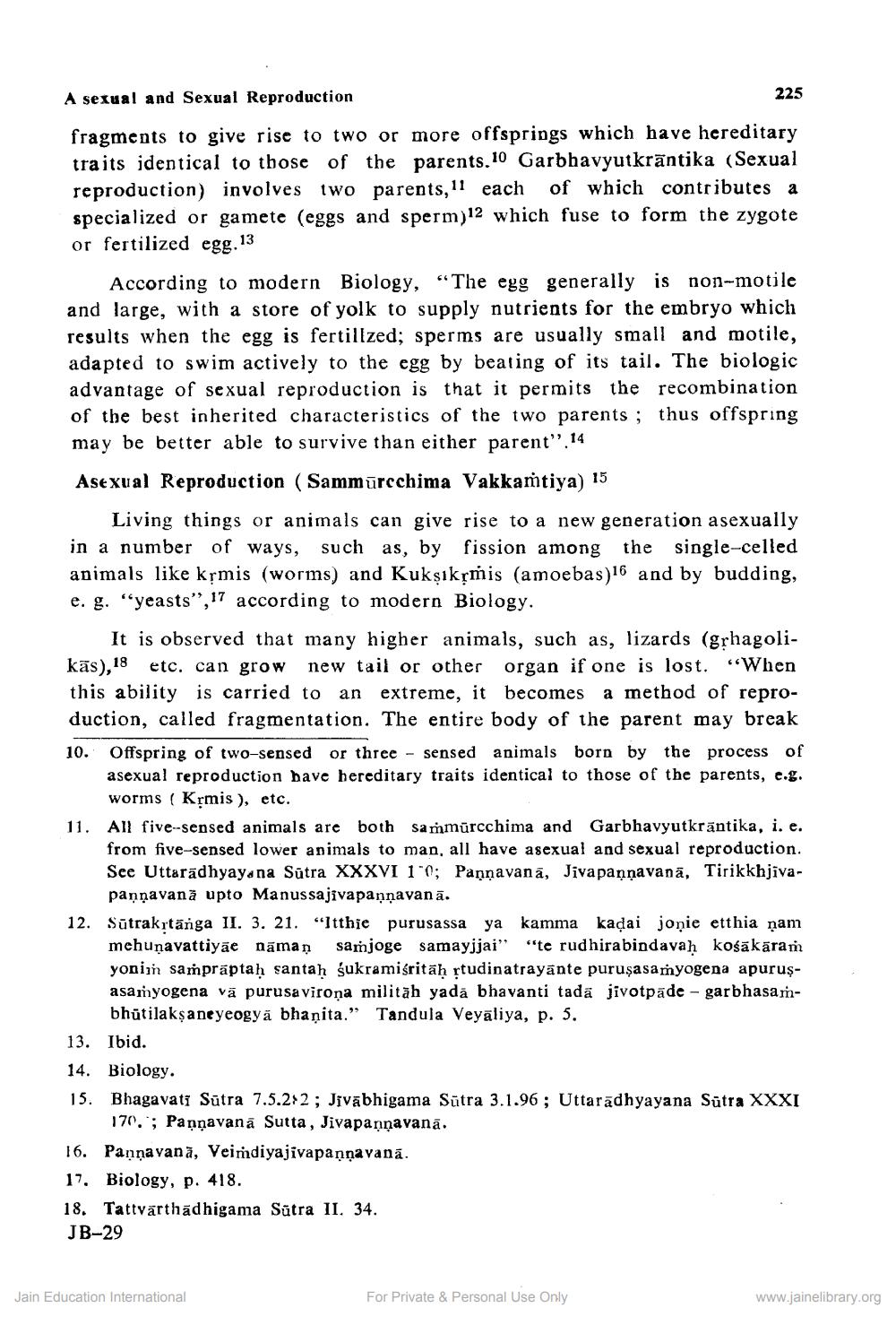________________
A sexual and Sexual Reproduction
225
fragments to give rise to two or more offsprings which have hereditary traits identical to those of the parents. 10 Garbhavyutkrāntika (Sexual reproduction) involves two parents, 11 each of which contributes a specialized or gamete (eggs and sperm)12 which fuse to form the zygote or fertilized egg. 13
According to modern Biology, “The egg generally is non-motile and large, with a store of yolk to supply nutrients for the embryo which results when the egg is fertilized; sperms are usually small and motile, adapted to swim actively to the egg by beating of its tail. The biologic advantage of sexual reproduction is that it permits the recombination of the best inherited characteristics of the two parents ; thus offspring may be better able to survive than either parent". 14
Asexual Reproduction (Sammūrochima Vakkamtiya) 15
Living things or animals can give rise to a new generation asexually in a number of ways, such as, by fission among the single-celled animals like krmis (worms) and Kuksikțmis (amoebas)16 and by budding, e. g. "yeasts","7 according to modern Biology.
It is observed that many higher animals, such as, lizards (grhagolikās), 18 etc. can grow new tail or other organ if one is lost. “When this ability is carried to an extreme, it becomes a method of reproduction, called fragmentation. The entire body of the parent may break 10. Offspring of two-sensed or three - sensed animals born by the process of
asexual reproduction bave hereditary traits identical to those of the parents, e.g.
worms ( Kệmis ), etc. 11. All five-sensed animals are both sammūrochima and Garbhavyutkrāntika, i. e.
from five-sensed lower animals to man, all have asexual and sexual reproduction. See Uttaradhyayana Sūtra XXXVI 1'0; Pannavana, Jivapaņņavanā, Tirikkhjiva
pannavană upto Manussajivapannavanā. 12. Sūtrakrtänga II. 3. 21. "Itthie purusassa ya kamma kadai jonie etthia nam
mehuņavattiyae naman samjoge samayjjai" "te rudhirabindavah kośakāram yonim samprāptah santah sukramisritāh rtudinatrayante puruşasamyogena apuruşasamyogena vā purusa viroņa militāh yada bhavanti tada jivotpade - garbhasam
bhūtilaksaneyeogy a bhanita." Tandula Veyaliya, p. 5. 13. Ibid. 14. Biology. 15. Bhagavati Sūtra 7.5.2>2 ; Jivābhigama Sūtra 3.1.96; Uttaradhyayana Sūtra XXXI
170.; Pannavana Sutta, Jivapannavanā. 16. Pannavanā, Veiîdiyajivapaņņavanā. 17. Biology, p. 418. 18. Tattvārthādhigama Sūtra II. 34. JB-29
Jain Education International
For Private & Personal Use Only
www.jainelibrary.org




